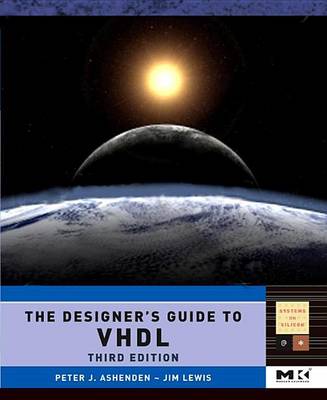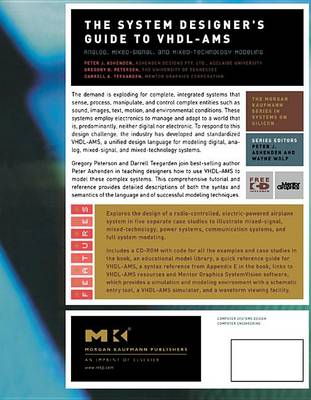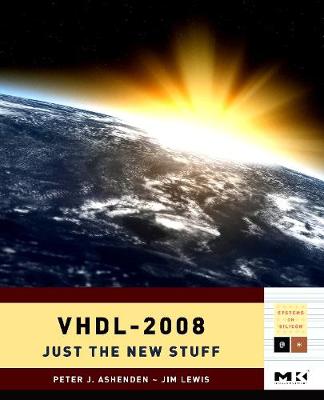Systems on Silicon
1 primary work • 4 total works
Book 3
VHDL, the IEEE standard hardware description language for describing digital electronic systems, has recently been revised. The Designer's Guide to VHDL has become a standard in the industry for learning the features of VHDL and using it to verify hardware designs. This third edition is the first comprehensive book on the market to address the new features of VHDL-2008.
The demand is exploding for complete, integrated systems that sense, process, manipulate, and control complex entities such as sound, images, text, motion, and environmental conditions. These systems, from hand-held devices to automotive sub-systems to aerospace vehicles, employ electronics to manage and adapt to a world that is, predominantly, neither digital nor electronic. To respond to this design challenge, the industry has developed and standardized VHDL-AMS, a unified design language for modeling digital, analog, mixed-signal, and mixed-technology systems. VHDL-AMS extends VHDL to bring the successful HDL modeling methodology of digital electronic systems design to these new design disciplines. Gregory Peterson and Darrell Teegarden join best-selling author Peter Ashenden in teaching designers how to use VHDL-AMS to model these complex systems. This comprehensive tutorial and reference provides detailed descriptions of both the syntax and semantics of the language and of successful modeling techniques. It assumes no previous knowledge of VHDL, but instead teaches VHDL and VHDL-AMS in an integrated fashion, just as it would be used by designers of these complex, integrated systems.
VHDL is a language for describing digital electronic systems. A vital, efficient step in the system design process, VHDL allows for the design and simulation of a hardware system prior to it actually being manufactured.
This new book provides a tutorial
introduction to the fundamental modeling features of VHDL and shows how the features are used for the design of digital systems.
Offering the same clear, accessible style as The Designer's Guide to VHDL, The Student's Guide is designed as a main text for introductory VHDL courses, and as a supplementary text for courses that require VHDL-based project work, such as computer architecture, digital design, and digital logic courses. This new condensed text also serves as a quick, self-teaching guide for practicing engineers who need to learn only the basics of VHDL.
This new book provides a tutorial
introduction to the fundamental modeling features of VHDL and shows how the features are used for the design of digital systems.
Offering the same clear, accessible style as The Designer's Guide to VHDL, The Student's Guide is designed as a main text for introductory VHDL courses, and as a supplementary text for courses that require VHDL-based project work, such as computer architecture, digital design, and digital logic courses. This new condensed text also serves as a quick, self-teaching guide for practicing engineers who need to learn only the basics of VHDL.
VHDL-2008: Just the New Stuff, as its title says, introduces the new features added to the latest revision of the IEEE standard for the VHDL hardware description language. Written by the Chair and Technical Editor of the IEEE working group, the book is an authoritative guide to how the new features work and how to use them to improve design productivity. It will be invaluable for early adopters of the new language version, for tool implementers, and for those just curious about where VHDL is headed.



